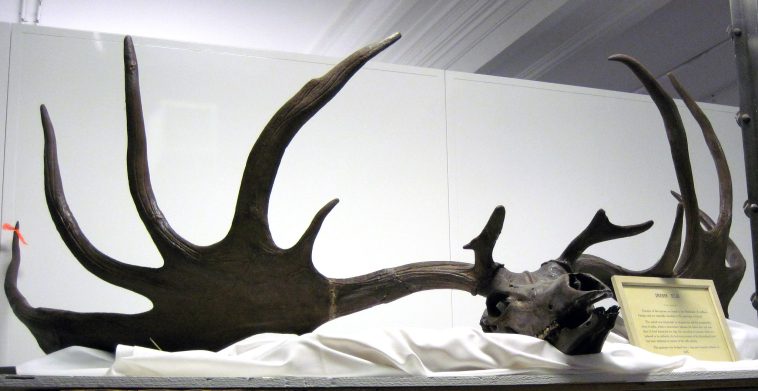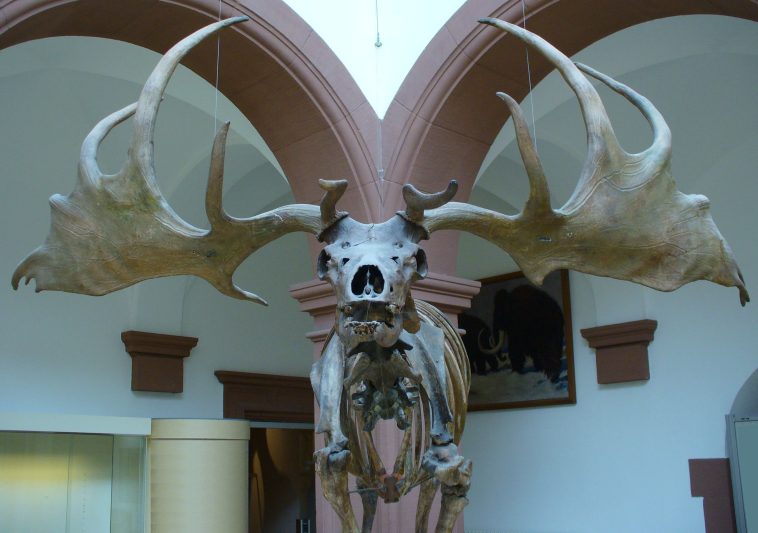
The largest deer species ever to walk the earth bore 12ft antlers but died out more than 10,000 years ago — leaving scientists debating its evolution.
Megaloceros giganteus has many names, including the Irish elk and Irish giant deer, both of which are incorrect due to the fact the animal was neither an elk nor exclusively Irish. Megaloceros is the largest deer species ever recorded in the fossil record and stood up to seven feet in height.
The 10,000 year old skull of an extinct Giant Irish elk found by a fisherman
This giant deer roamed the vast expanses of Eurasia from the westernmost reaches of Ireland to easternmost reaches of China during the glacial Pleistocene Epoch. The Irish attribution to the animal’s existence is due to a predominance of well-preserved fossil findings in peat bogs across Ireland.

Megaloceros giganteus bore the largest antlers of any cervid in history — weighing up to 88lbs and spanning a distance of 12ft from tip to tip. The evolution of these antlers has been debated throughout history, the most recent theories related to sexual selection and loosely attributed with their eventual extinction.
The evolution of the giant deer up until the 20th century was credited to orthogenesis, in which the antlers would have evolved linearly with the species up until their extinction, opposing the prospect of sexual selection.
Footage of the Megaloceros giganteus bones at the Ulster Museum in Belfast:
Modern scientists agree upon the current theory of sexual evolution, but are unsure about the prime selection factor. The antlers may have played a defensive role and were used to fend off predators or other male deer during mating season. Another likely conclusion was that the giant antlers served as visual mechanisms to attract does during courtship.
The definitive reason for their extinction is still up for debate.
Learn more about this creature in a video from PBS below:




